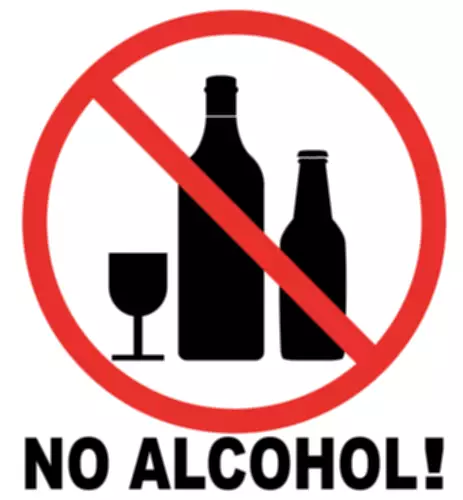Harm reduction provides a good method for matching these individuals at that stage and providing motivational incentives (e.g., discussing the negative consequences the person is experiencing) to motivate their desire for positive change” (Marlatt & Witkiewitz, 2002). In addition to issues with administrative discharge, abstinence-only treatment may contribute to high rates of individuals not completing SUD treatment. About 26% of all U.S. treatment episodes end by individuals leaving the treatment program prior to treatment completion (SAMHSA, 2019b). Studies which have interviewed participants and staff of SUD treatment centers have cited ambivalence about abstinence as among the top reasons for premature treatment termination (Ball, Carroll, Canning-Ball, & Rounsaville, 2006; Palmer, Murphy, Piselli, & Ball, 2009; Wagner, Acier, & Dietlin, 2018). One study found that among those who did not complete an abstinence-based (12-Step) SUD treatment program, ongoing/relapse to substance use was the most frequently-endorsed reason for leaving treatment early (Laudet, Stanick, & Sands, 2009).
Once you are able to allow yourself some alcohol in controlled circumstances, you may ultimately choose to give up drinking entirely. Moderation gives you control of your drinking and allows you to take back control of your life. While complete abstinence often requires you to avoid any circumstances or people that might tempt you to drink, moderation allows you to still participate in work functions and social events while empowering you to have more control over when and how much you drink. Abstinence from alcohol and other drugs has historically been a core criterion for recovery, defined by the Betty Ford Institute as a “voluntarily maintained lifestyle characterized by sobriety, personal health, and citizenship” (Betty Ford Institute Consensus Panel, 2007, p. 222).
5. Tree construction
Therefore, this approach allows the client and their treatment team to come up with a specific plan that allows them to use their substance of choice in a moderate and safe way. A holistic treatment approach is another crucial aspect of quitting alcohol effectively. This means addressing not just the physical symptoms of addiction but also the psychological, emotional, social, and spiritual aspects as well. Such approaches could include cognitive behavioural therapy to address mental health issues that may contribute to excessive drinking; yoga or meditation for stress relief; art therapy for expressing emotions; faith-based support groups for spiritual growth among others.
- Arguing over which program is more effective misses the point that moderation is, by nature of the disease of alcoholism, impossible for alcoholics.
- They allow consideration of a large pool of predictor variables and can discover predictors that even experienced investigators may have overlooked (Zhang et al., 2010).
- This approach could produce biased estimates when the proportion of missing data is large and/or the assumptions that dropouts have relapsed to heavy drinking is untenable.
- This includes those managing liver disease, bipolar disorder, abnormal heart rhythms, or chronic pain.
- Take our short alcohol quiz to learn where you fall on the drinking spectrum and if you might benefit from quitting or cutting back on alcohol.
- Here are additional reflection questions from a therapist to help you understand your own relationship with alcohol, and if moderation meets your needs and preferences.
- This problem has plagued the field since the inception of tree-based algorithms especially earlier versions of the methods.
Abstinence means giving up alcohol completely, and it’s the foundation of traditional treatment options like AA and most inpatient rehabs. Sometimes, though, a challenge comes along which the person in recovery refuses to face. They get stuck and will not be able to progress any further until the challenge is dealt with. Many of those who fail to progress will end up relapsing, but a minority somehow remain abstinent for years despite being stuck in recovery. It may be effective for people who drink too heavily; but, ineffective for those who need training to become dependent. But, for the population of drinkers that have already crossed that line, Moderation Management is an exercise in futility.
Stephanie S. O’Malley
Successful moderation involves understanding yourself (what factors trigger excessive drinking), planning (how much you are going to drink and how you are going to stop), and taking concrete steps to exit or avoid situations where you won’t be able to moderate. Limited social drinking is a realistic goal for some people who struggle with alcohol, and should definitely be considered by people who have not been able to successfully adhere to abstinence. Rather, when people with SUD are surveyed about reasons they are not in treatment, not being ready to stop using substances is consistently the top reason cited, even among individuals who perceive a need for treatment (SAMHSA, 2018, 2019a). Indeed, about 95% of people with SUD say they do not need SUD treatment (SAMHSA, 2019a). Even among those who do perceive a need for treatment, less than half (40%) make any effort to get it (SAMHSA, 2019a). Although reducing practical barriers to treatment is essential, evidence suggests that these barriers do not fully account for low rates of treatment utilization.
After five years, the majority remained abstinent and described SUD in line with the views in the 12-step programme. For some, attending was just a routine, whereas others stressed that meetings were crucial to them for remaining abstinent and maintaining their recovery process. The purpose of this paper is to investigate how clients – five years after completing treatment interventions endorsing abstinence – view abstinence and the role of Alcoholics Anonymous (AA) in their recovery process.
Moderation vs. Abstinence: Should You Cut Back or Quit Drinking Completely?
As recovery processes stretch over a long period, it is suggested that stable recovery is obtained after five years at the earliest (Hibbert and Best, 2011). And even if you don’t plan to quit, you may find that you controlled drinking vs abstinence lose interest in alcohol after practicing moderation. Evidence on the efficacy of abstinence-based programs, such as Alcoholics Anonymous, is hard to come by because the nature of these programs involves anonymity.
- If alcohol is playing a central role in your life, you might find more success exploring sobriety.
- Advocates of nonabstinence approaches often point to indirect evidence, including research examining reasons people with SUD do and do not enter treatment.
- Ultimately, nonabstinence treatments may overlap significantly with abstinence-focused treatment models.
- For people who have not been able to maintain sobriety through Alcoholics Anonymous (AA) or other 12-step programs, they may wish to consider if moderation may be a more effective path for them to take.
- Clearly, most research agrees that most alcoholism patients drink at some point following treatment.
Despite the growth of the harm reduction movement globally, research and implementation of nonabstinence treatment in the U.S. has lagged. Furthermore, abstinence remains a gold standard treatment outcome in pharmacotherapy research for drug use disorders, even after numerous calls for alternative metrics of success (Volkow, 2020). Models of nonabstinence psychosocial treatment for drug use have been developed and promoted by practitioners, but little empirical research has tested their effectiveness. This resistance to nonabstinence treatment persists despite strong theoretical and empirical arguments in favor of harm reduction approaches.










